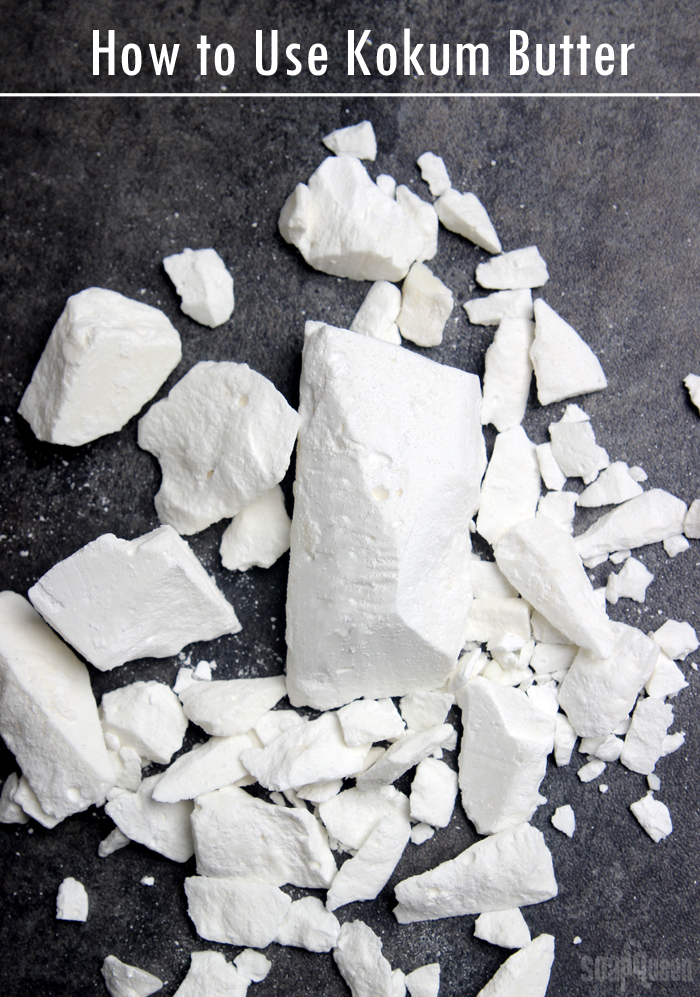
At first glance, kokum butter looks a bit odd. It’s crumbly and almost looks like it’s covered in soda ash. But within those pieces of butter is something really special. It’s ultra moisturizing, and leaves your hair and skin feeling soft and silky.
Kokum butter has a firm texture that’s similar to cocoa butter. It’s firmer and more crumbly than other butters Bramble Berry carries, including shea and mango. Read all about butters here. Kokum starts to melt around 90-104 ° F. So, when it comes in contact with the skin, it melts just slightly. It feels lightweight and not greasy. It can be used on its own to moisturize the skin, lips or hair. You can also use that texture in combination with other ingredients to make amazing body butter, lip balm, soap and more. Before getting started on your kokum butter creations, there are a few things to know.
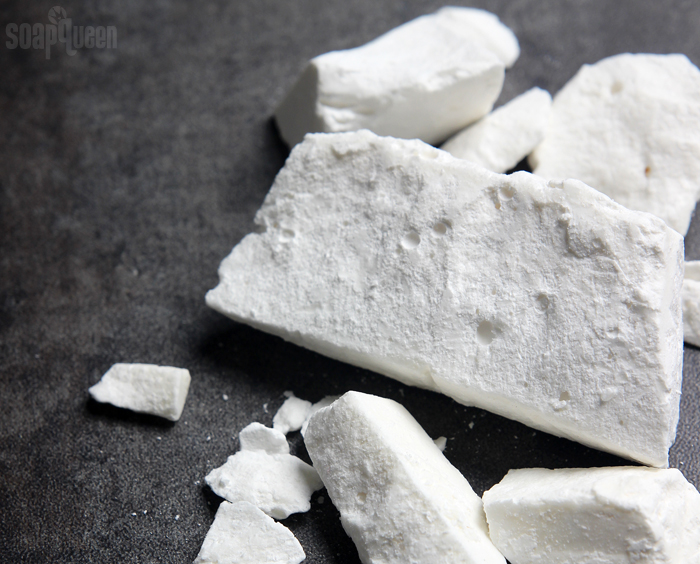
The butter comes from the fruit kernels of the Indian tree, also known as Garcinia indica. It’s indigenous to the Western Ghats region of India. It has a high stearic acid content of around 40-45%. That stearic acid content does a few things. First, it adds firming properties to your recipes. It also helps thicken products like lotion and conditioner. Read more about stearic acid in this Swift Crafty Monkey post. This one on butters is pretty great too. Kokum butter is also one of the most stable vegetable butters with a shelf life of about 1-2 years. As an added bonus, kokum butter has little to no scent. That means it won’t compete with fragrance or essential oil in your handmade products.
Now that you’re completely sold on kokum butter and its amazing benefits, you’re probably wondering how to use it in your products. Don’t worry, we’ve got you covered!
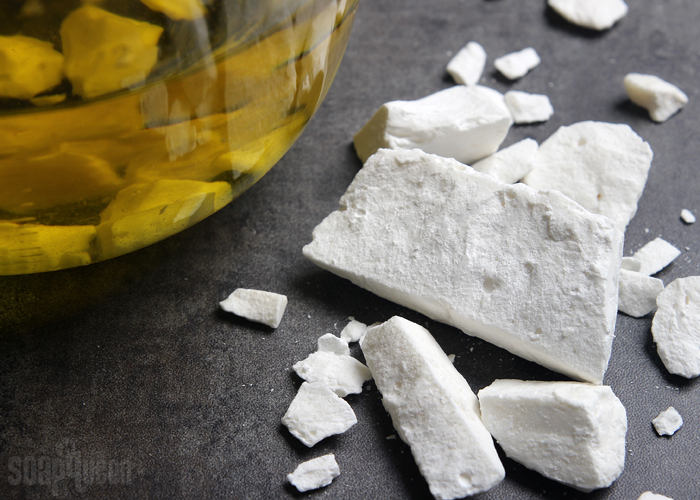
Cold Process Soap
Kokum butter can be used in soap up to 10%. Because of that high stearic acid content, a larger amount can cause the soap to trace fairly quickly. Learn more about trace in this post. We like to use it around 5%. That gives you all the moisturizing benefits and creates a firmer bar. We added the butter to a recipe with ground pumpkin seeds and eucalyptus essential oil. Look out for that tutorial later this week. As for melt and pour, we don’t recommend adding extra butter. It can make the bases oily or soft. If you do add kokum butter to melt and pour soap, use no more than 1 teaspoon per pound of MP soap.
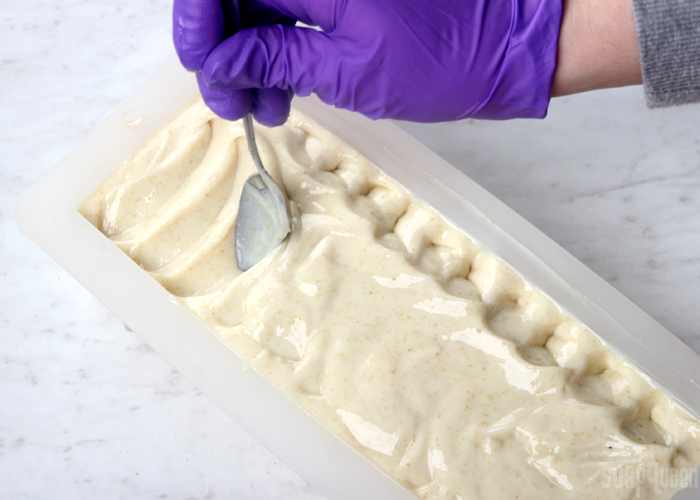 This cold process soap recipe featuring kokum butter, ground pumpkin seeds and eucalyptus essential oil will be up later this week.
This cold process soap recipe featuring kokum butter, ground pumpkin seeds and eucalyptus essential oil will be up later this week.
Lotion/Conditioner
The stearic acid content of kokum butter is important to consider in emulsified products like lotion and conditioner. In higher concentrations, the butter can make the formula too thick. Using about 1-3% in your recipe will work nicely. You may also want to decrease the amount of stearic acid. It is usually recommended at 3-5%. You can drop that to 2-3%. That will give you a lotion or conditioner that’s thick and luxurious. Learn more about making lotion in this post. If you want to make conditioner, this video shows you how.
Balms
Kokum butter can be used on its own in body and lip balms, although it will be very firm. If you prefer a softer texture, you can use it at 5% and up. A traditional balm formula is 1:1:1 wax, butter and oil. Kokum butter pairs nicely with beeswax, cera bellina wax or candelilla wax. As for oil, the sky is the limit! Sweet almond, avocado or chia seed oil feel super moisturizing. Before you get started on your balm, pop a few spoons in the freezer. This is called The Spoon Trick. When you dip the cold spoons into the melted balm, it hardens instantly so you can check the texture. If it’s too soft or too firm, you can adjust from there. Learn more about formulating balms in this post.
Body Butter
The texture of kokum butter is perfect for a hydrating body butter. Because kokum butter is firm, you’ll want to melt it before whipping. On its own it will be too stiff, so you can use it at 5% or more in combination with a softer butter like coffee or avocado to make the recipe more balanced. Liquid oils like argan or meadowfoam feel nice in body butter recipes as well. They add a silky, spreadable feeling. Kokum butter would be a great addition or substitute for cocoa butter in this recipe.
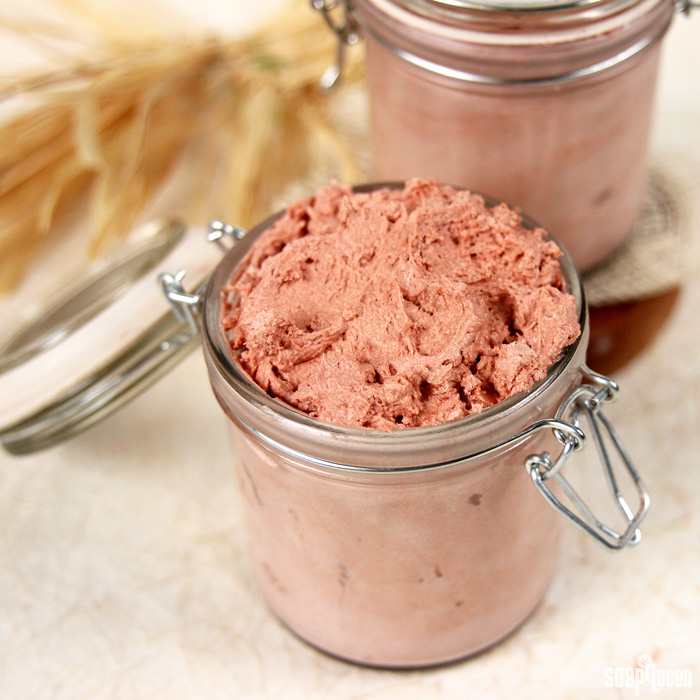 Kokum would be a great addition to the Whipped Amber Bronzing Butter.
Kokum would be a great addition to the Whipped Amber Bronzing Butter.
Scrubs
If you want to add moisturizing properties to your scrub, kokum butter is the way to go. On it’s own, kokum butter is too firm to mix with an exfoliant, but would be great with a liquid oil or softer butter. Give it a try in the Sparkling Snow Sugar Scrub in place of shea butter.
Bath Bombs
Oil and butter wet bath bombs, which helps them hold their shape. They also moisturize the skin. You can add about .5 oz. of melted kokum butter per 1.5 cups of fizzy mixture to start with. If you want the bath bombs wetter, you can add more from there. Get more tips in the Bath Bomb Questions and Answers post.
Have you used kokum butter before? What’s your favorite way to use it?




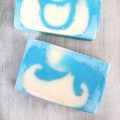
Hi.. I would love to make a lotion and deodorant bar using kokum butter, what is the usage rate in each recipe. Also I live in India where the temperature is always hot so is there any way to eliminate the oils and replace with just butters to keep it solid always? Tia
Hi Tia, you can make a solid lotion bar which would probably be more of what you need. I would start with a base like this recipe: https://www.soapqueen.com/bath-and-body-tutorials/lotion/beeswax-lotion-bars-diy/
I have seen the name Kokum Butterate (potassium kokum butterate or DIMETHICONOL kokum buttertae ) flying around and I know it is not the same thing as natural kokum butter. My question is, what is kokum Butterate and if I use it in my formulation can I still call it a natural product?
We have don’t carry Kokum Butterate and have never worked with it before so I’m not 100% sure.
Kokum Butter: https://www.brambleberry.com/Kokum-Butter-P6703.aspx
kokum butterate denotes that the kokum butter was saponified with sodium hydroxide to make soap.
Hi,
Can I use kokum butter in Melt and Pour soaps? What should be the proportion when added witha goat milk soap?
You can, but melt and pour is already completed soap so you can’t add too much to it without compromising the texture and firmness. SFIC can accept 1 teaspoon of extra oils per pound and Stephenson can accept 0.5% extra oils.
Hi, curious about substituting for cocoa butter, is the stearic acid content high enough in the cocoa butter to replace kokum butter without needing to add more stearic acid. I have a recipe I would like to try, however no kokum. Thanks for the advice!
Cocoa butter is a good substitute, but it’s hard to say for sure without seeing the recipe. I recommend making a small test batch to see how you like it first.
More about butters: https://www.soapqueen.com/bath-and-body-tutorials/tips-and-tricks/all-about-butters-in-bath-beauty-products/
Hi! Can I make a body butter with kokum butter alone, with almond oil? Kindly guide me through the recipe for this. Thank you
Kokum butter is fairly hard on its own. You may want to make a small test batch with 4:1 melted butter to sweet almond oil. If the butter is too stiff, you can add more sweet almond oil.
What can be used in place of kokum butter?
Cocoa butter is a good substitute, it has a similar firm consistency to kokum butter.
Cocoa butter: https://www.brambleberry.com/Cocoa-Butter-Pastilles–P3218.aspx
I recently tried to use Kokum butter to replace beeswax in a lotion bar since the butter is so hard. However, I experienced Kokum “bloom” which is when the smooth melted butter creates a cauliflower-like surface when it hardens.
Is there something that can be done to combat this? Will this Kokum bloom in a lotion bar still happen if I include beeswax?
I was really just trying to find a natural lotion bar recipe that didnt include wax since I dont 100% love that feeling on my skin.
It sounds like the butter got grainy. That’s pretty common, especially in the summer when butters typically harden and melt over and over. Tempering will help prevent graininess. That involves heating the butter for about an hour and then cooling it rapidly in the fridge. You can learn about tempering here, the suggestions for cocoa and mango will work for kokum: https://www.soapqueen.com/bath-and-body-tutorials/tips-and-tricks/soaping-in-the-summer-heat/
For the batch now, you can try tempering the whole thing. Then, once it’s poured into the containers, make sure they cool as fast as possible – the fridge is a good option. They should be nice and firm and free of any blooming.
-Kelsey with Bramble Berry
I recently decided to start a business selling soap. I have made soap using some of your recipes, If I sell them via Etsy do I need to included that the recipe was from your site? I uses only essential oils and natural/organic products. I have changed a few things on each recipe, but for the most point they look the same. I love your recipes, so far they have great feedback from friends/family.
Thank you so much
Jenny
You don’t need to link back to us! Our recipes are free for people to use and sell. If people ask about the design, feel free to send them to our blog – we appreciate that. Congrats on starting to sell your soap by the way. That’s a huge step. 🙂
-Kelsey with Bramble Berry
I made lavender body butter 8oz and 4oz of coconut oil. in order to whip it to a cake icing consistency I had to add almond oil so it wouldn’t stick to the beater.
A liquid oil can definitely help make the butter more soft and easier to spread on the skin. 🙂
-Kelsey with Bramble Berry
With it’s high stearic acid content, would adding kokum butter to shaving soap recipes help boost lather?
We haven’t given that a try but I think it would help! You can give it a try in a small test batch to see what you think. 🙂
-Kelsey with Bramble Berry
Another great post – I’ll be adding this info to my research files!
Thanks Michael, glad you enjoyed it!
-Kelsey with Bramble Berry
I don’t know if this helps or not, but the last mango butter I got was very crumbly and made it hard to accurately measure so I melted it in the microwave gradually and it was easy to measure. When it hardened it was less crumbly. The next time I melted it, it was even less crumbly. I’m looking forward to the tutorial with this new butter!
That’s a great tip, thanks Eric!
-Kelsey with Bramble Berry
Will this be added to the lye calculator?
It is in the Lye Calculator! 🙂
Lye Calculator: https://www.brambleberry.com/Pages/Lye-Calculator.aspx
-Kelsey with Bramble Berry